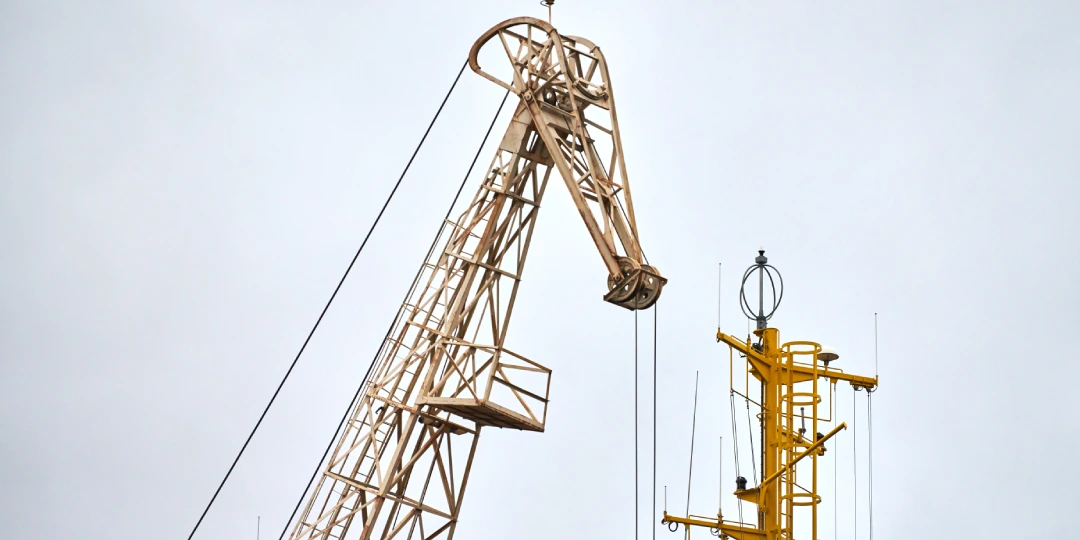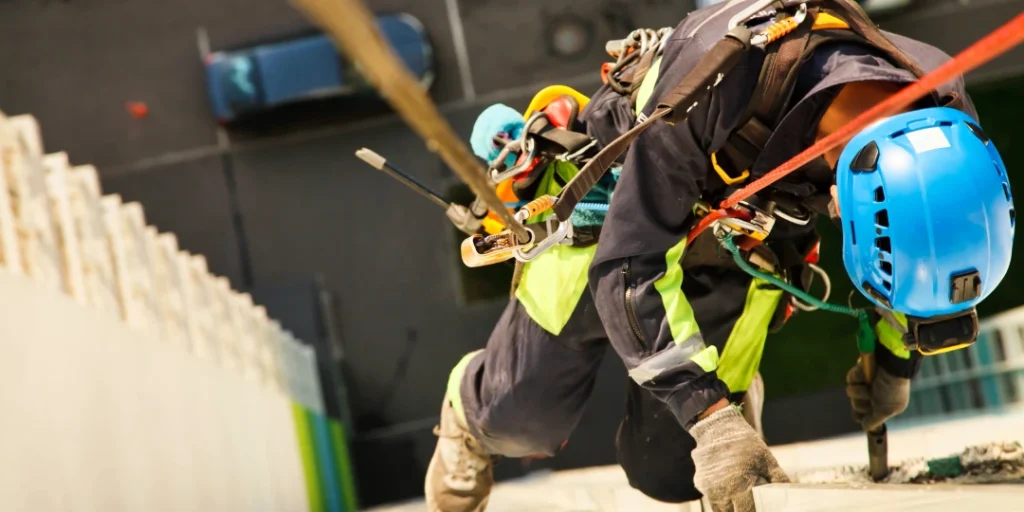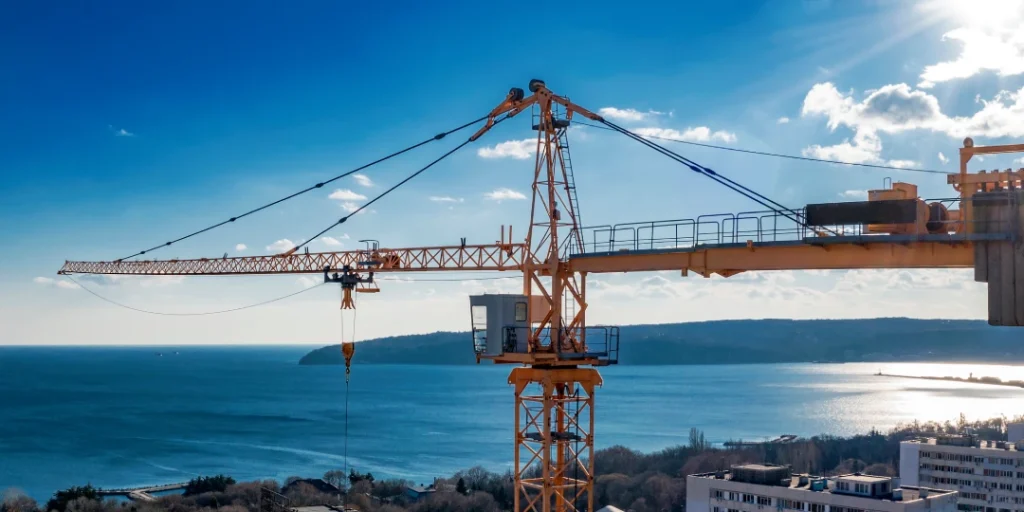Introduction: The Crucial Role of Rigging in Industrial Safety
Rigging is foundational to the integrity of lifting operations across virtually every industrial sector. Whether hoisting heavy machinery at a manufacturing plant or suspending structural beams during downtown Nashville’s rapid urban development, proper rigging is what determines whether an operation runs smoothly or ends in catastrophe. At Fortier Loss Control, rigging is not treated as a peripheral process—it is the structural spine of workplace safety. Their protocols ensure each lift is calculated, controlled, and carried out with uncompromising diligence.
Nashville’s industrial growth has brought with it an increase in construction density, logistical complexity, and workforce diversity. These conditions demand an equally robust approach to risk mitigation. Rigging oversights—such as underestimating load weight or using degraded equipment—can cause property damage, financial loss, and irreversible injury. In such an environment, reliance on outdated or informal rigging practices is a gamble that no reputable operation should accept. Fortier Loss Control reinforces that effective rigging isn’t just about heavy lifting—it’s about preserving lives, assets, and reputations.
What sets Fortier Loss Control apart is their commitment to treating rigging as both a technical art and a cultural standard. Their emphasis on detailed planning, certified training, and rigorous inspections elevates rigging from a procedural task to a core operational principle. By embedding safety into every phase of a lift—from pre-assessment to final set-down—Fortier ensures that each project benefits from a proactive, precision-driven approach. This philosophy has made them a trusted name in Nashville’s risk management ecosystem and a leader in elevating industrial safety standards.
Understanding Rigging: Definition, Scope, and Importance
Rigging is the discipline of configuring, attaching, and maneuvering equipment to lift and move heavy or awkwardly shaped loads safely. It involves the use of specialized hardware such as wire rope slings, chain hoists, shackles, and spreader beams. At its core, rigging is an intricate blend of mechanical know-how, weight distribution analysis, and real-time situational awareness. It is as much about physics and geometry as it is about craftsmanship and sound judgment. When performed correctly, rigging creates a seamless transition from stationary weight to dynamic movement—without compromising safety.
In a fast-developing city like Nashville, the demands on rigging operations are multifaceted. Downtown high-rises, historical renovation projects, and sprawling logistics centers all require customized rigging solutions. A single miscalculation in sling angle or center of gravity can have disastrous effects, particularly in tight, urban environments where margin for error is minimal. Fortier Loss Control understands that each rigging scenario is unique. That’s why their services are rooted in site-specific planning and tailored load handling procedures, ensuring each lift is aligned with structural, environmental, and human factors.
Beyond the mechanical elements, rigging also plays a central role in project timelines and operational efficiency. Delays caused by equipment failure or mismanaged lifts can stall entire construction schedules. More importantly, improperly handled rigging introduces avoidable risk into otherwise controlled environments. This is why Fortier Loss Control insists on positioning rigging as a critical competency within every safety program. They train teams to treat each lift with strategic foresight and to view rigging as a specialized discipline—one that demands attention to detail, continual learning, and unwavering accountability.
Common Hazards in Rigging Operations
Rigging, while essential, is fraught with potential hazards that can manifest quickly and with devastating results. Load shifts during hoisting, equipment malfunction, sling failures, and misjudged weight distributions are just a few of the perils that riggers face daily. These risks are amplified in high-traffic or confined environments—such as those found on urban construction sites in Nashville—where there is little room for error. Even the most seasoned operators can be caught off guard if protocols aren’t strictly followed or environmental variables are underestimated.
Human error remains one of the most common contributors to rigging incidents. This includes miscommunication between team members, incorrect use of rigging gear, or failure to account for dynamic forces like wind gusts or crane sway. These factors, though often viewed as minor oversights, can drastically alter the outcome of a lift. Additionally, fatigue, complacency, or overconfidence can lead even experienced crews to bypass critical safety steps. Fortier Loss Control’s approach emphasizes situational awareness and methodical execution to mitigate these human factors effectively.
To address these inherent risks, Fortier implements hazard identification and risk assessment as a foundational step in every rigging plan. Their crews are trained to anticipate potential failure points before they materialize—whether it’s checking sling angles, inspecting for equipment fatigue, or mapping out exclusion zones for ground personnel. Through advanced training, daily toolbox talks, and real-time jobsite audits, Fortier transforms potential vulnerabilities into well-controlled variables, thereby ensuring a safer, more reliable lifting operation every time.

Nashville’s Regulatory Environment and Compliance Standards
Rigging activities in Nashville must navigate a complex web of federal, state, and local regulations, each with its own expectations for safety, equipment use, and personnel competency. The Occupational Safety and Health Administration (OSHA) sets the baseline for rigging practices, but in Tennessee, the state-run TOSHA (Tennessee Occupational Safety and Health Administration) adds additional oversight. Furthermore, Nashville’s metropolitan growth has prompted localized ordinances to ensure lifting operations in congested areas meet the highest safety standards.
Compliance with these layered regulations is not merely a matter of legal obligation—it is essential to maintain operational integrity and worker safety. Fortier Loss Control takes a proactive approach by embedding regulatory requirements into every phase of their rigging protocols. From pre-lift planning and crew certification to equipment tracking and documentation, compliance is seamlessly integrated into operational workflows. This foresight prevents violations, reduces liability exposure, and fosters a work culture that values due diligence.
In practice, Fortier goes well beyond the minimum standards. Their safety consultants routinely review updates to OSHA and TOSHA mandates, ensuring clients remain ahead of the curve. Whether it’s adhering to the latest ANSI B30.9 standards for slings or maintaining current training certifications for signal persons and riggers, Fortier treats compliance not as a checkbox, but as a benchmark for excellence. This commitment ensures that clients across Nashville receive not only regulatory protection but the peace of mind that comes from working with a partner invested in their long-term safety and success.
The Fortier Loss Control Philosophy: Safety Through Precision
Fortier Loss Control operates under a deeply ingrained philosophy: safety is a function of precision. In the realm of rigging, where one miscalculation can lead to catastrophic outcomes, precision is not an aspiration—it is a necessity. Fortier’s methodical and engineered approach ensures that every lift, no matter the complexity or scope, is executed with exacting attention to detail. This culture of precision permeates their training programs, operational planning, and onsite supervision, reinforcing a zero-tolerance mindset toward preventable incidents.
Central to Fortier’s philosophy is the concept of total lift control. Each phase of the operation—from site analysis and equipment selection to crew briefings and post-lift reviews—is treated as a critical component in a broader safety ecosystem. There are no assumptions, only verifications. Measurements are confirmed, calculations are double-checked, and contingency plans are prepared in advance. This comprehensive attention to detail ensures that rigging operations are not only technically sound but resilient to unexpected challenges.
Moreover, Fortier views safety not as an isolated responsibility of safety managers, but as a shared accountability across the entire workforce. This philosophy cultivates a safety-first culture where riggers, engineers, supervisors, and even subcontractors are actively engaged in maintaining standards. By fostering a collective sense of ownership and precision, Fortier Loss Control transforms the jobsite from a high-risk environment into a zone of controlled, coordinated, and confident lifting operations. It is through this disciplined, data-informed approach that Fortier Loss Control sets the gold standard for rigging safety in Nashville.
Pre-Lift Planning: Assessments and Job Hazard Analysis (JHA)
Every successful rigging operation begins long before the first sling is attached or the crane is engaged. Pre-lift planning is the bedrock of safe and efficient lifting, and at Fortier Loss Control, it is treated with meticulous intent. The process starts with a comprehensive Job Hazard Analysis (JHA), a systematic method for identifying potential risks, environmental challenges, and logistical constraints specific to the site. This planning phase goes far beyond the clipboard; it is a collaborative effort involving safety consultants, rigging specialists, and site supervisors who assess every possible scenario to eliminate surprises.
A thorough JHA considers all critical variables—load characteristics, lifting path, ground stability, weather conditions, and the proximity of personnel and structures. This level of scrutiny is particularly important in the diverse terrain of Nashville, where jobs may range from tightly confined urban lifts to sprawling industrial hoists. At Fortier, JHA sessions are interactive, engaging the entire crew in visual walkthroughs, role assignments, and what-if scenario discussions. This engagement ensures that each team member understands their role in maintaining safety and mitigating risk.
Pre-lift planning doesn’t end with hazard identification—it evolves into a dynamic blueprint that informs execution. Fortier ensures that communication protocols, emergency procedures, and equipment needs are documented and disseminated before the lift. These detailed lift plans provide a framework for disciplined execution, allowing even the most complex rigging operations to proceed with confidence and clarity. In this way, Fortier transforms planning into a proactive safety mechanism that anchors every rigging activity in foresight and structure.

Selecting the Right Rigging Equipment
The success of any lifting operation is inseparable from the integrity and suitability of the rigging equipment used. Selecting the right rigging gear is not a matter of convenience; it is a calculated decision based on load dynamics, environmental conditions, and the specific demands of the task at hand. At Fortier Loss Control, equipment selection is approached with the same level of precision as the lift itself. Every chain, hook, sling, and shackle is scrutinized for capacity, compatibility, and condition.
Rigging equipment is not one-size-fits-all. The materials, design, and application requirements vary significantly. For example, synthetic slings may be optimal for lifting delicate or finished materials due to their flexibility and reduced risk of abrasion, whereas alloy chain slings offer durability and resistance for rugged, high-temperature environments. Fortier’s personnel are trained to understand these nuances and make informed selections that align with both safety standards and operational efficiency. All equipment is verified against the manufacturer’s ratings, job specifications, and relevant ANSI/ASME standards.
Fortier also maintains a rigorous system for equipment tracking, maintenance, and inspection. Each component is cataloged, inspected on a defined schedule, and replaced proactively when signs of wear or degradation are detected. Tags and documentation are checked before every use, ensuring traceability and compliance. This disciplined approach to rigging equipment management not only reduces the likelihood of failure but also enhances accountability across every lift. By integrating technical knowledge with uncompromising quality control, Fortier sets a high standard for equipment integrity in Nashville’s lifting operations.
Load Calculations: Balancing Weight, Force, and Angles
Accurate load calculation is one of the most critical yet misunderstood aspects of safe rigging. Lifting a load is not merely about matching the weight to the crane’s capacity; it involves a series of complex calculations that consider angles, force distribution, center of gravity, and dynamic impact. A seemingly minor miscalculation can lead to uneven weight loads, sling overstressing, or even catastrophic failure. At Fortier Loss Control, the math behind every lift is treated with engineering-level seriousness, ensuring the physical forces involved are fully understood and responsibly managed.
The intricacies of load geometry become especially crucial when dealing with multi-leg sling configurations or irregularly shaped materials. Sling angle, for instance, can drastically increase the tension on each leg of the rigging system. A 60-degree angle may appear benign to the untrained eye but could result in forces far exceeding the rated capacity of the gear. Fortier’s specialists are equipped with advanced calculation tools and software that allow for real-time analysis of these variables, transforming guesswork into science.
To reinforce this precision, Fortier includes load calculation education as a central component of their training programs. Riggers and supervisors are taught not only how to calculate forces correctly, but also how to visualize load paths, identify shifting centers of gravity, and implement redundant safety measures. By ensuring that every lift is underpinned by mathematical certainty, Fortier removes ambiguity from the operation and instills confidence in the crew. This commitment to data-informed rigging is part of what makes Fortier a trusted authority in safe lifting practices throughout the Nashville region.
Hands-On Training and Certification: Fortier’s Approach
Knowledge without application is inert. That’s why Fortier Loss Control believes in hands-on, experiential training as the backbone of effective rigging education. Their certification programs go beyond classroom lectures and PowerPoint slides—participants engage directly with real rigging setups, perform critical calculations, and simulate high-stress lifting scenarios. This immersive format ensures that skills aren’t just understood—they’re embodied. Fortier’s philosophy is clear: a certified rigger must not only know the theory but execute it with confidence and precision in the field.
Courses are customized based on role and responsibility. Entry-level workers focus on rigging basics, inspection procedures, and signal communication. Supervisors delve into lift planning, hazard recognition, and regulatory compliance. Specialized modules cover unique challenges such as lifting in confined spaces or around live utilities. All sessions are led by seasoned instructors—professionals who have logged thousands of hours in the field and understand the intricacies of real-world rigging. This peer-to-peer format fosters authenticity, respect, and practical competence.
Certification is contingent on demonstration, not attendance. Participants must pass both written and practical assessments to earn their credentials. Fortier maintains a robust database of certified personnel, including expiration dates and continuing education requirements. Recertification and skills refreshers are encouraged, especially as regulations and technologies evolve. By treating training as an ongoing journey rather than a one-time event, Fortier ensures that every individual entrusted with rigging responsibilities is equipped to meet the highest standards of safety and professionalism on Nashville job sites.

Frequently Asked Questions

Conclusion: Lifting Nashville to Higher Standards Through Rigging Excellence
Rigging is far more than a mechanical function—it is a disciplined practice rooted in foresight, precision, and accountability. In Nashville’s rapidly evolving industrial and construction sectors, the margin for error is razor-thin. Every lift carries with it the weight of not just steel or concrete, but the safety of personnel, the protection of property, and the integrity of entire operations. Fortier Loss Control stands at the forefront of this responsibility, redefining what it means to conduct safe and strategic lifting operations.
Through a comprehensive and methodical approach—ranging from rigorous pre-lift planning and equipment selection to advanced training and data-driven inspections—Fortier has embedded safety into the very DNA of its rigging protocols. Their unwavering commitment to compliance, continuous learning, and real-world performance sets them apart as a trusted partner for contractors, developers, and facility managers across Middle Tennessee. They don’t merely check boxes—they build systems, train leaders, and elevate standards.
As Nashville continues to grow upward and outward, the demands on rigging operations will only intensify. In this environment, “good enough” is not enough. Fortier Loss Control offers more than solutions; they provide assurance. Assurance that every load will be lifted with competence. Assurance that every risk will be anticipated. And above all, assurance that safety will never be compromised. When rigging is done right, everything—and everyone—rises.



